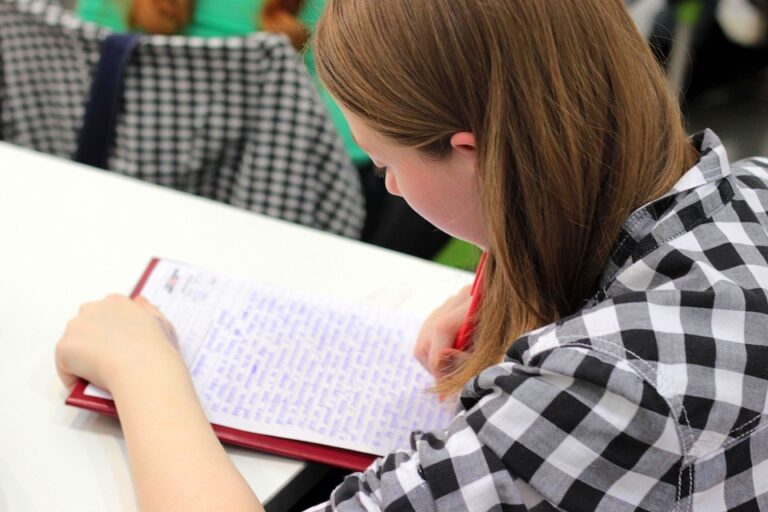
[ad_1]
5 Innovative Ways to Foster Creativity and Motivation in Students
As educators, one of our primary goals is to inspire and motivate our students to think creatively and engage actively in the learning process. By fostering creativity and motivation, we can help them develop the skills they need to succeed in their academic and professional lives. Here are five innovative ways to achieve this:
1. Promote a Growth Mindset
(*5*) a growth mindset in students can significantly impact their motivation and creativity. By teaching them that their abilities can be developed through dedication and hard work, rather than being fixed traits, they are more likely to take on challenges and persevere in the face of setbacks.
Real-life example: A teacher notices that a student struggles with a particular subject and emphasizes the importance of effort and persistence in mastering the material. Over time, the student’s mindset shifts, and they become more motivated to improve their skills.
2. Embrace Project-Based Learning
Project-based learning encourages students to explore real-world problems and develop creative solutions. By engaging in hands-on, collaborative projects, students can apply their knowledge in practical ways, leading to a deeper understanding of the subject matter and increased motivation to learn.
Real-life example: A group of students works on a project to address environmental issues in their community. Through research, experimentation, and critical thinking, they come up with innovative solutions and present their findings to local authorities, sparking positive changes in their surroundings.
3. Provide Opportunities for Self-Expression
Creating a supportive environment where students feel comfortable expressing themselves is crucial for fostering creativity. By incorporating activities such as art, music, writing, and public speaking into the curriculum, students can explore their unique talents and develop a sense of autonomy and creativity.
Real-life example: A student discovers a passion for photography and starts a photography club at school. With the support of their peers and teachers, they organize exhibitions and capture powerful images that reflect their individual perspective, boosting their confidence and motivation.
4. Encourage Curiosity and Exploration
(*5*) curiosity and open-mindedness in students can lead to new discoveries and innovative thinking. By creating opportunities for hands-on experiences, field trips, and independent research, students can expand their horizons and develop a thirst for knowledge and creativity.
Real-life example: A science teacher organizes a field trip to a local research laboratory, where students have the opportunity to interact with scientists and conduct experiments. Inspired by the experience, a student becomes deeply interested in a scientific topic and pursues it further, ultimately leading to groundbreaking research.
5. Foster a Culture of Collaboration
Collaboration fosters creativity by exposing students to diverse perspectives and ideas. By encouraging teamwork, group discussions, and peer feedback, students can learn from each other, solve problems collectively, and generate innovative solutions to complex challenges.
Real-life example: A teacher assigns a group project that requires students to work together to design and build a sustainable community model. Through lively discussions, brainstorming sessions, and compromise, the students come up with a unique and environmentally friendly concept that earns them recognition at a regional competition.
Conclusion
By promoting a growth mindset, embracing project-based learning, providing opportunities for self-expression, encouraging curiosity and exploration, and fostering a culture of collaboration, educators can effectively nurture creativity and motivation in their students. These innovative approaches not only enhance the learning experience but also prepare students to become adaptable, resourceful, and forward-thinking individuals in the future.
Storytelling Approach
Imagine a classroom where students are empowered to embrace challenges, explore their passions, and collaborate with their peers to solve real-world problems. A growth mindset takes root, and students realize that their potential is limitless. Through project-based learning and opportunities for self-expression, they discover their unique talents and develop a deep sense of purpose in their education. Curiosity leads them on a journey of exploration, and collaboration enriches their learning experience, leading to innovative solutions and meaningful connections. This is the power of fostering creativity and motivation in students.
FAQs
How can we encourage a growth mindset in students?
(*5*) students to embrace challenges and learn from their mistakes can help foster a growth mindset. By emphasizing the value of effort and perseverance, students can develop a belief in their ability to grow and improve.
What are some examples of project-based learning?
Project-based learning can involve designing and building prototypes, conducting scientific experiments, creating multimedia presentations, and developing community service initiatives, among others.
How can educators create a culture of collaboration in the classroom?
By promoting teamwork, facilitating group discussions, and providing opportunities for peer feedback, educators can encourage collaboration and collective problem-solving among students.
Why is it important to provide opportunities for self-expression?
Self-expression allows students to explore their creativity, develop their unique talents, and gain a sense of autonomy and confidence in their abilities.
[ad_2]